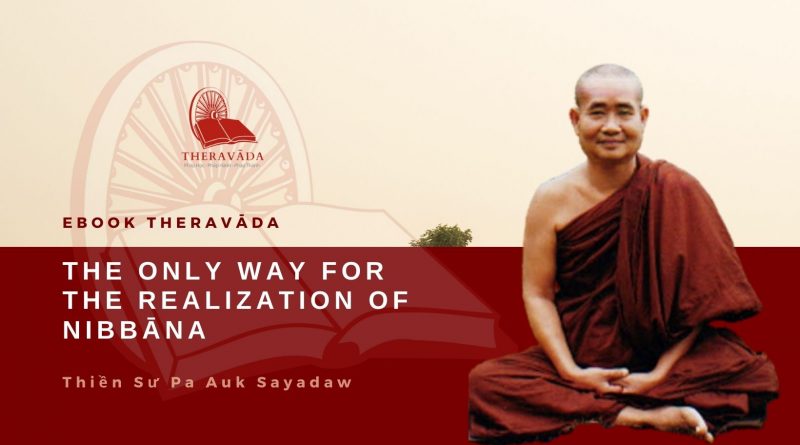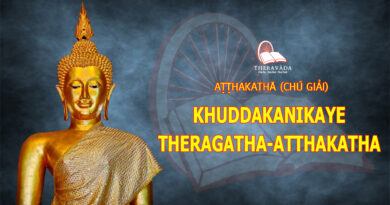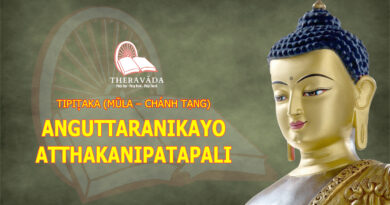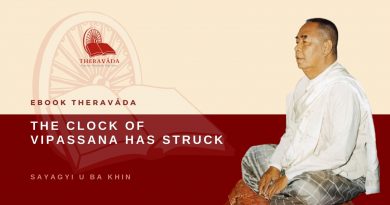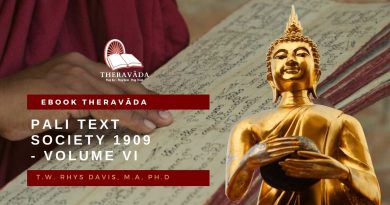The Only Way For The Realization Of Nibbāna – Pa Auk Sayadaw (eng)
The Only Way for the Realization of Nibbāna
Pa Auk Sayadaw
Preface
In The Only Way for the Realization of Nibbāna, the Most Venerable Sayadaw gives a brief summary of the practice necessary for such realization, namely samatha and vipassanā. He bases his discussion on the first section of the ‘Mahā∙Sati∙Paṭṭhāṇa Sutta’, the in&out-breath section of ‘The Great Mindfulness-Foundation Sutta’. In the preface (pp.1-23), the Sayadaw discusses the ‘Mahā∙Sati∙Paṭṭhāṇa Sutta’ within the context of other suttas where The Buddha discusses the practice necessary for realizing Nibbāna. Afterwards, the Sayadaw discusses the in&out-breath section of the sutta within the context of the remaining sections of ‘The Great Mindfulness-Foundation Sutta’. Afterwards, the entire in&out-breath section is quoted (pp.25-26). And there is a brief discussion of how one progresses from mundane samatha and vipassanā to supramundane samatha and vipassanā (p.27).
The Sayadaw then discusses in practical detail The Buddha’s instructions on samatha in the in&out-breath section of the ‘Mahā∙Sati∙Paṭṭhāṇa Sutta’, beginning with Ever mindful he breathes in; ever mindful he breathes out; ending with ‘Tranquillizing the body formation, I shall breathe in ’: thus he trains. ‘Tranquillizing the body formation, I shall breathe out ’: thus he trains; this being the four stages of development for attaining the four jhānas (pp.28-36). The Sayadaw then discusses in practical detail The Buddha’s instructions on the four stages of vipassanā. First Thus he abides contemplating the body in the body internally, or he abides contemplating the body in the body externally, or he abides contemplating the body in the body internally and externally; this being direct knowledge and contemplation of ultimate materiality and ultimate mentality through the elements contemplation section of the ‘Mahā∙Sati-∙Paṭṭhāṇa Sutta’, as well as the sections of consciousness-, feelings- and dhammas contemplation (pp.37-60). Second
He abides contemplating originating phenomena in the body; or he abides contemplating perishing phenomena in the body; or he abides contemplating [both] originating&perishing phenomena in the body; this being the direct knowledge and contemplation of causal and momentary rise&perish (pp.61-65). Third Or mindfulness that ‘there is the body’ is established just sufficient for knowledge, sufficient for mindfulness; this being the higher mundane vipassanā knowledges, prior to the realization of Nibbāna (p.66). Fourth And he abides independent, and does not cling to anything in the world; this being the supramundane realization of Nibbāna (p.67).
The Sayadaw describes each stage of samatha and vipassanā in terms of the Noble Eightfold Path, and he describes vipassanā in terms of the full knowledges described by The Buddha as necessary for realization of Nibbāna, quoted and discussed in the preface. Their mutual correspondence is shown in a table (p.69). Tables describe the phenomena that make up ultimate materiality (pp.41-45) and mentality (pp.51, 53, 56-59) as described by The Buddha, and their correspondence to the various classifications given by The Buddha in earlier quoted suttas (p.71): the five aggregates (p.72), twelve bases (p.73), eighteen elements (p.74), and four Noble Truths (p.75)
DOWNLOAD EBOOK: The Only Way for the Realization of Nibbāna
1PAS 07 The Only Way for the Realization of Nibbāna - pamc 072014
